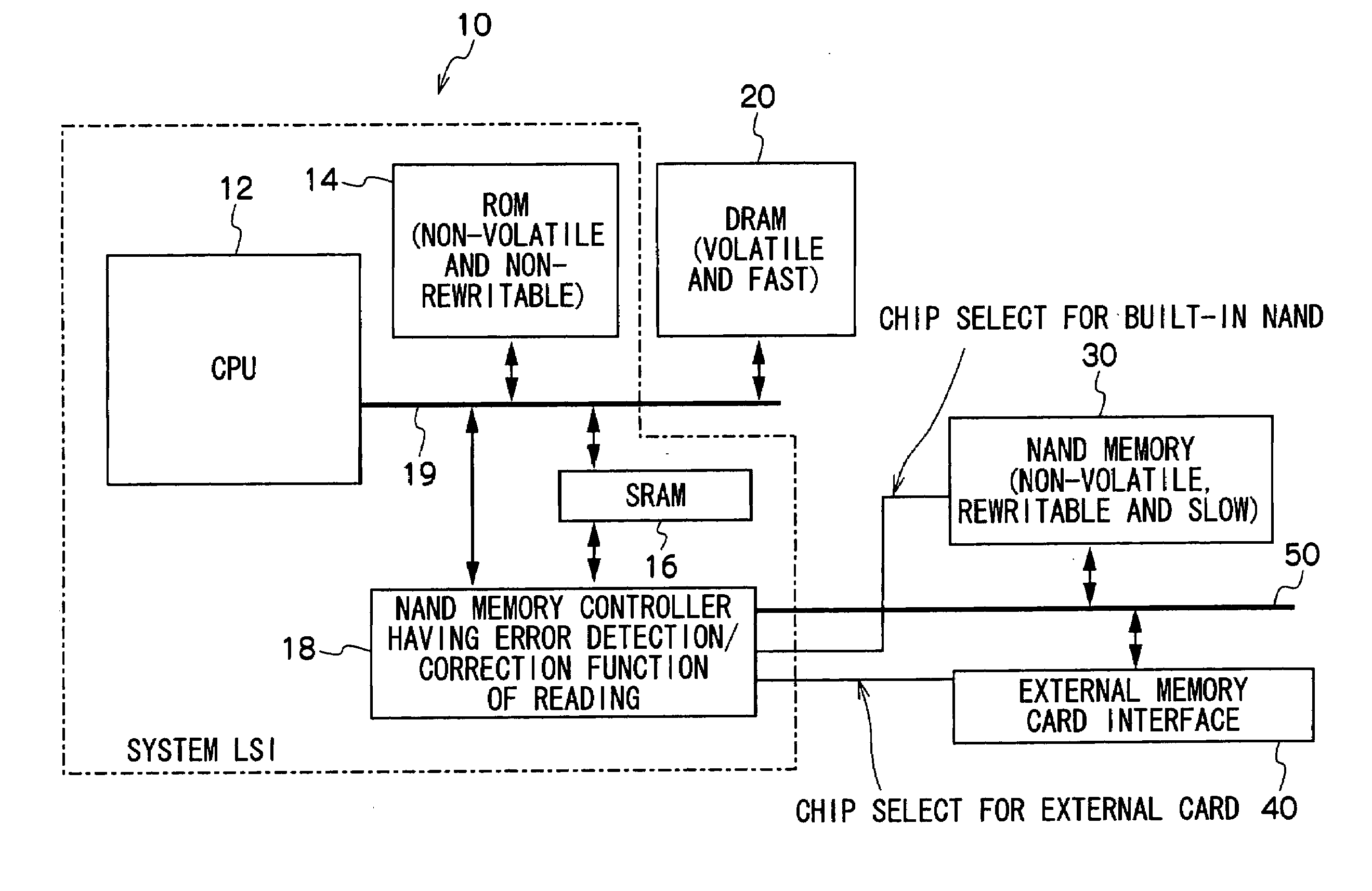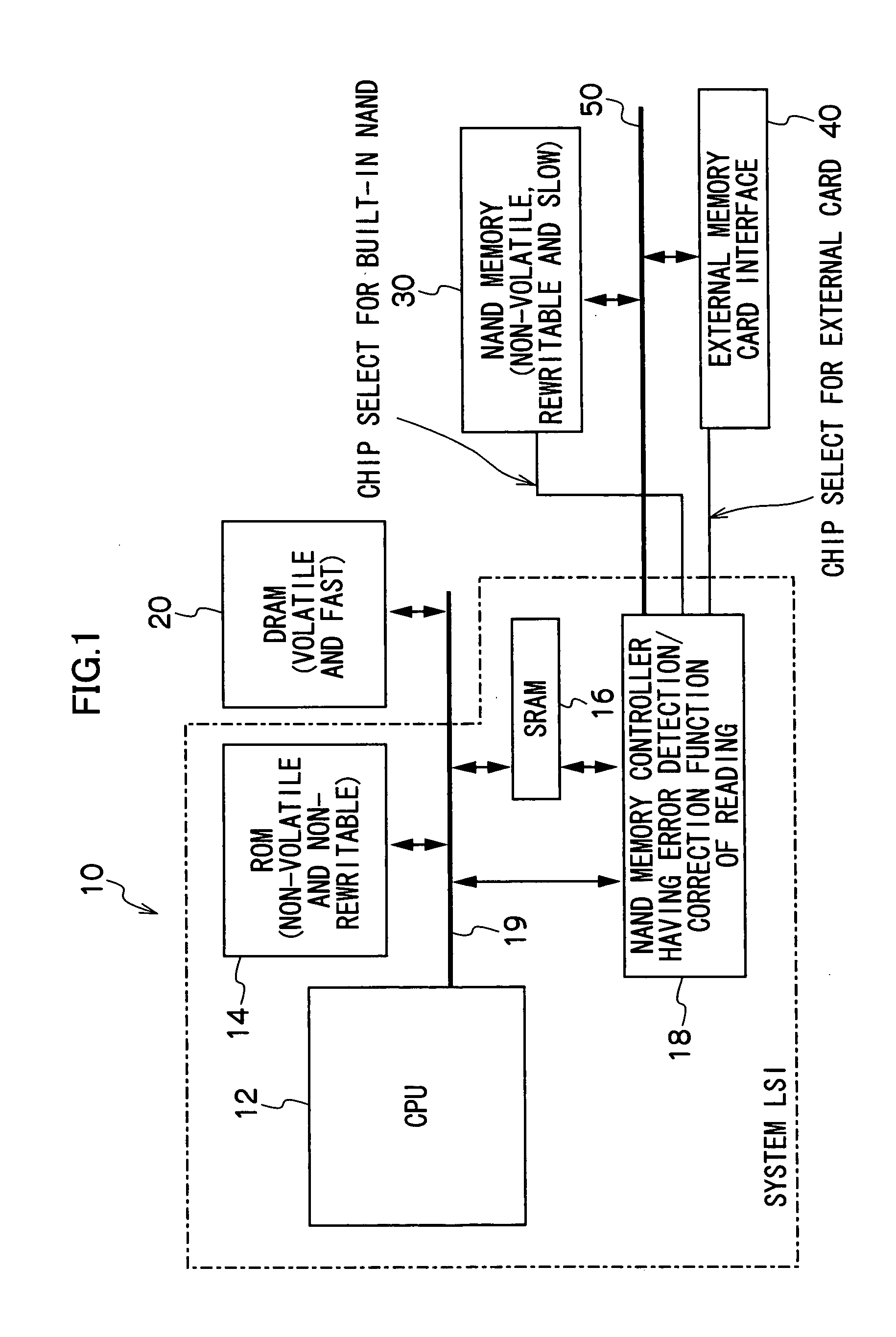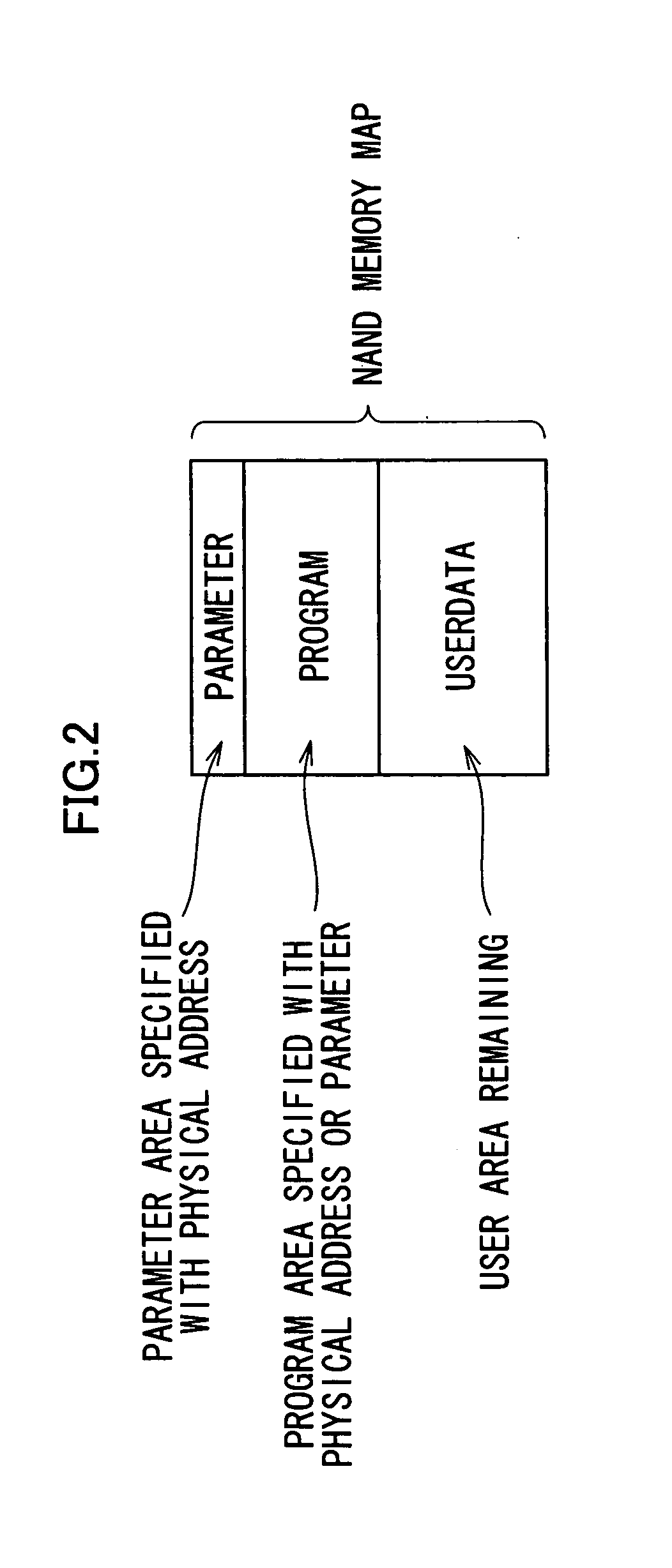Electronic apparatus
a technology of electronic equipment and main memory, applied in the direction of microcontrollers, instruments, program control, etc., can solve the problems of high cost, system inflexibility, and program cannot be directly executed without being located into a main memory, and achieve the effect of low cos
- Summary
- Abstract
- Description
- Claims
- Application Information
AI Technical Summary
Benefits of technology
Problems solved by technology
Method used
Image
Examples
first embodiment
[0052]FIG. 3 is a flowchart illustrating operations for starting the electronic apparatus according to a first embodiment of the present invention.
[0053]When the electronic apparatus is powered on (or when the power-on reset is executed), the CPU 12 first executes the ROM code in the ROM 14 to perform the initialization of the system that is minimally necessary to control the NAND memory controller 18, then selects only the chip select signal for the NAND flash memory 30 by controlling the NAND memory controller 18, accesses the area designated with the specific physical address (the first page of the first block) of the NAND flash memory 30, reads parameters from the designated area, and locates the read parameters into the SRAM 16 (step S10).
[0054]The CPU 12 then performs the system initialization by using the parameters stored in the SRAM 16 (step S12). Since the SRAM 16 does not require initialization, the CPU 12 can immediately access the SRAM 16, and can initialize and set the...
second embodiment
[0058]FIG. 4 is a flowchart illustrating operations for starting the electronic apparatus according to a second embodiment of the present invention. The steps described in the first embodiment with reference to FIG. 3 are denoted with the same reference numerals in FIG. 4, and the detailed description thereof is omitted.
[0059]In the second embodiment illustrated in FIG. 4, the processing of step S20 is executed instead of step S12 of the first embodiment.
[0060]The parameters stored in the NAND flash memory 30 include a parameter for initializing the DRAM 20.
[0061]At step S20 for initializing the system, the CPU 12 initializes the DRAM 20 by using the parameter for initializing the DRAM 20, which parameter is one of the parameters stored in the SRAM 16. Thereby, any of DRAMs of various capacities and types can be used.
third embodiment
[0062]FIG. 5 is a flowchart illustrating operations for starting the electronic apparatus according to a third embodiment of the present invention. The steps described in the first embodiment with reference to FIG. 3 are denoted with the same reference numerals in FIG. 5, and the detailed description thereof is omitted.
[0063]In the third embodiment illustrated in FIG. 5, the processing of step S22 is executed instead of step S12 of the first embodiment.
[0064]The parameters stored in the NAND flash memory 30 include a parameter for setting a clock frequency of the system, which is used when the CPU 12 transfers the main program from the NAND flash memory 30 to the DRAM 20, and a parameter for setting a pulse width of a control signal, which is used when the CPU 12 accesses the NAND flash memory 30.
[0065]At step S22 for initializing the system, the CPU 12 performs setting of the clock frequency of the system and setting of the NAND memory controller 18 for the transfer of the program,...
PUM
 Login to View More
Login to View More Abstract
Description
Claims
Application Information
 Login to View More
Login to View More - R&D
- Intellectual Property
- Life Sciences
- Materials
- Tech Scout
- Unparalleled Data Quality
- Higher Quality Content
- 60% Fewer Hallucinations
Browse by: Latest US Patents, China's latest patents, Technical Efficacy Thesaurus, Application Domain, Technology Topic, Popular Technical Reports.
© 2025 PatSnap. All rights reserved.Legal|Privacy policy|Modern Slavery Act Transparency Statement|Sitemap|About US| Contact US: help@patsnap.com



